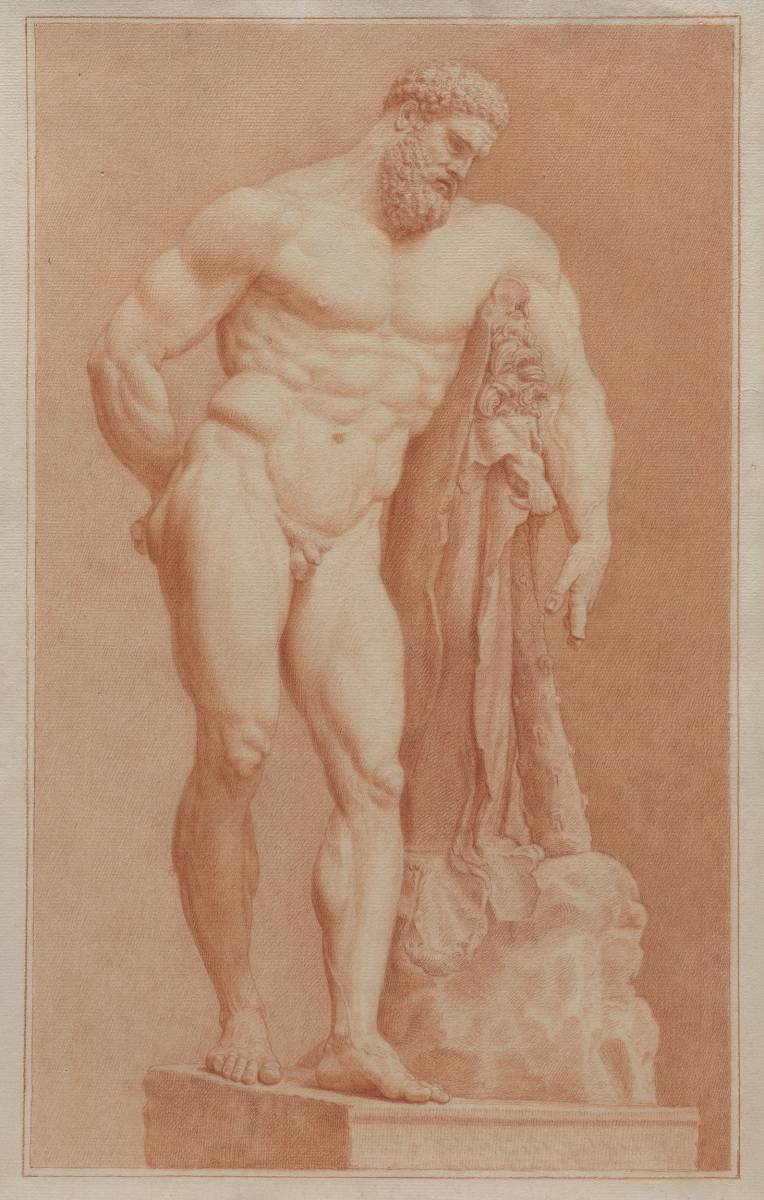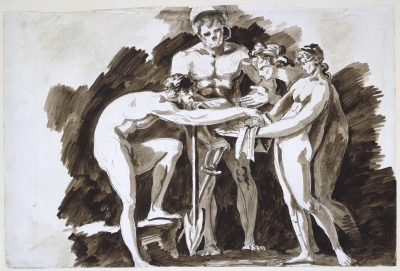This finely wrought red chalk drawing is attributed to the Florentine draughtsman and engraver, Giovan Domenico Campiglia and depicts the Farnese Hercules, it was almost certainly made for the Grand Tour market.
Campiglia trained in Florence before moving to Rome in around 1716. He was entrusted with replicating altarpieces by Cigoli, Roncalli and Domenichino in St Peter’s which had been damaged by damp. Campiglia was particularly skilled at replicating antique sculpture. One of his most significant clients was the Englishman Richard Topham who assembled a vast paper museum documenting the most notable antiquities in Rome. Campiglia distinguished himself as one of the most refined and sensitive draughtsmen of the project. The young Pompeo Batoni was also employed by Topham and Campiglia’s softly modelled, exquisitely worked sheets share a common clarity of design with those of Batoni. Hundreds of Campiglia’s sheets are contained in the Topham albums now in the collection of Eton College. The present drawing compares closely to the Topham sheets in their approach and handling, particularly the use of a fine net of hatched lines to describe the form of the sculpture. From 1734 Campiglia was employed in a remarkable undertaking, making drawings for the printed plates of the Museo Capitolino. This was a critical catalogue published by the Calcografia Camerale edited and with a commentary by the antiquarian Monsignor Giovanni Gaetano Bottari. Campiglia’s ability to accurately capture the forms of antique sculpture therefore appealed to both serious scholars and Grand Tour antiquarians.
This finely worked drawing depicts the Farnese Hercules, one of the most esteemed sculptures on display in Rome. Housed in the courtyard of Palazzo Farnese, it was a fixture of every Grand Tour itinerary. Unearthed in fragments during the sixteenth century, the torso being discovered in the Baths of Caracalla, followed by its legs, although too late for the original campaign of restoration completed by Guglielmo della Porta. The original legs were not reunited until a second campaign of restoration undertaken by Carlo Albacini in 1787 on the eve of its departure with the other Farnese marbles for Naples. Campiglia’s drawing shows the Hercules with della Porta’s legs and missing fingers on his left hand. The purposes of such a drawing were various. Whilst the Farnese Hercules had been engraved, most famously by Hendrick Goltzius in 1617, there was still demand for accurate drawings for both antiquarians and artists. Collections of drawings of notable antiquities, such as this, were regularly commissioned by Grand Tourists keen to furnish their libraries with a portfolio illustrating the great sculptures they had seen in Rome. Few draughtsman who serviced this market were as talented or prolific as Campiglia.


